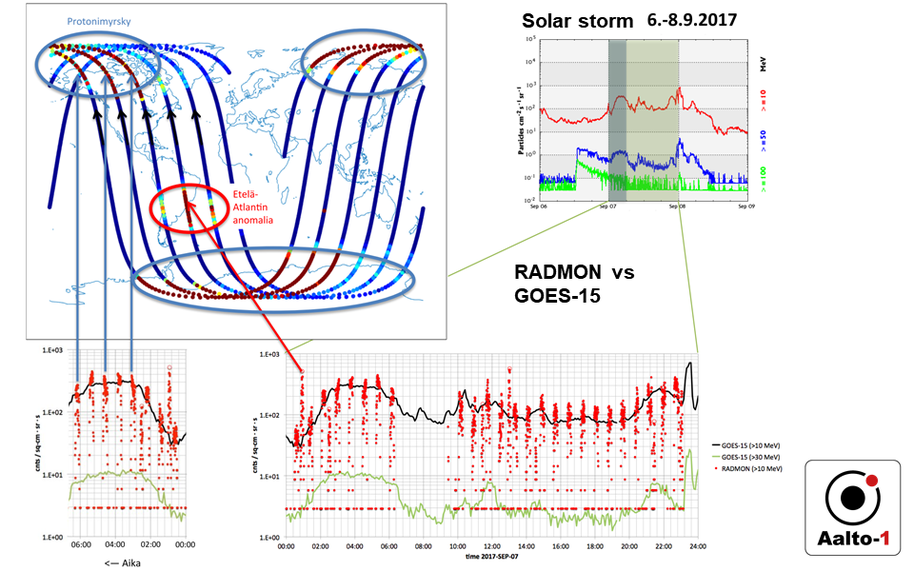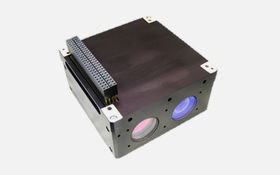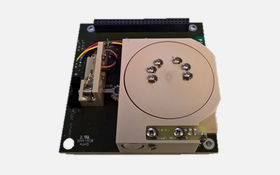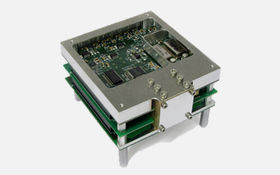Mission and Science Results
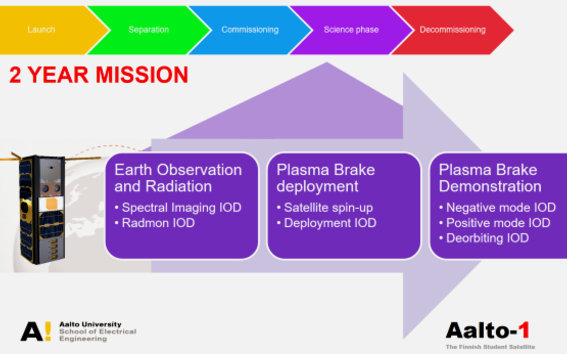
Imaging Fabry-Perot spectrometer
VTT developed for Aalto-1 satellite a miniature Piezo actuated Fabry-Perot Interferometer. It s one of the smallest Earth Observation spectral images in the world and it is able recording of 2D spatial images at the selected wavelength bands simultaneously. In the spectrometer, the multiple orders of the Fabry-Perot Interferometer are used at the same time matched to the sensitivities of the image sensor channels. For example in a Bayer pattern RGB sensor or in a three CCD video camera based on a wavelength separation prism there are different types of pixels for three wavelength channels. The operational wavelength range of the built prototypes can be tuned in the range 400 – 1100 nm and spectral resolution is in the range 5 – 10 nm @ FWHM.
The hyperspectral imager records simultaneously a 2D image of the scene at three narrow wavelength bands determined by the selected three orders of the Fabry-Perot Interferometer which depend on the gap between the mirrors of the Fabry-Perot Cavity. The air gap value is determined using a capacitive measurement and changed under closed loop control with three Piezo or MEMS actuators. The effective aperture the Fabry-Perot interferometer is 7 mm in diameter and the air gap can be controlled in the range 0.8 – 3.5 um enabling the use of the wide range of interferometer orders.
The first image taken by Aalto-1 satellite on 5.7.2017. The image is taken by AaSI VIS camera over Norway and it is the first ever satellite image taken by Finnish satellite:

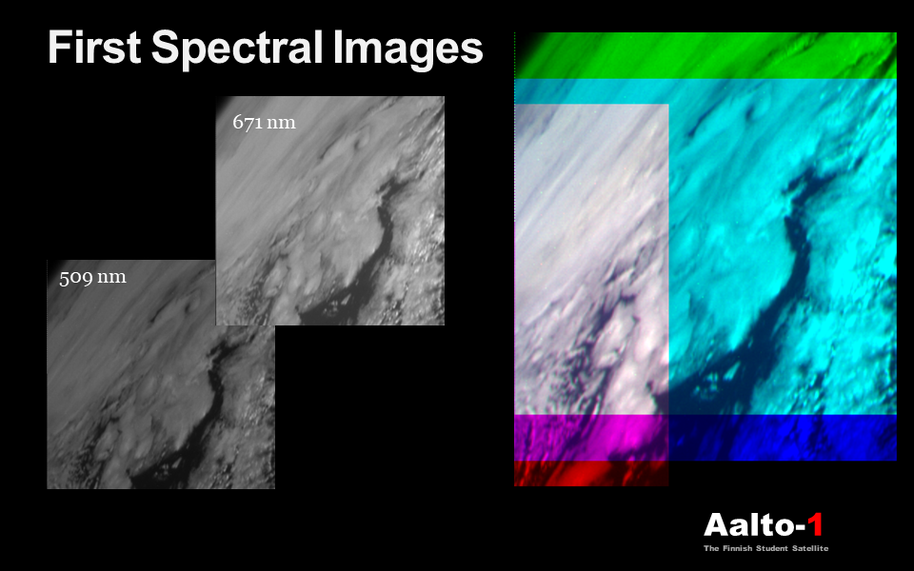
First spectral image taken by AaSI SPE camera. The image demonstrates that spectral camera is fully functional.
Electrostatic plasma brake
The electric solar wind sail is a space propulsion method, invented in Finland at FMI (fmi.fi). The electrostatic plasma brake is a variant of the concept which consists of a single gravity-stabilized tether intended to deorbiting a satellite, to avoid leaving it in orbit as space debris after the mission.
The Electric Sail Experiment onboard Aalto-1 is intended (1) to demonstrate the deployment of a conducting thin multiline tether, (2) to measure the electrostatic force exerted on the tether by the ram flow of the ionospheric plasma in different positive and negative tether voltages and finally, if all goes well, (3) to bring down the satellite and so to demonstrate the usefulness of the plasma brake as a satellite deorbiting device.
To measure the expected micronewton scale electrostatic force, the voltage is turned on always in the same phase of the tether's rotation (e.g. always when the tether is moving towards the ram flow). After several spins, the effect accumulates enough to cause a detectable change in the tether's and satellite's spin rate, from which the force can be calculated. Over longer timescale, the effect of the force can be deduced from a lowering of the satellite orbit.
A first version of the electric sail experiment will fly on ESTCube satellite in 2012. The purpose of ESTCube is to measure the force, but not yet to demonstrate the deorbiting of the satellite. The Aalto-1 experiment is intended to have a longer tether so that a more significant electrostatic drag force can be produced which is enough for deorbiting.
The subsystem will be manufactured by consortium led by FMI .
Compact radiation monitor (University of Turku and University of Helsinki)
A novel readout concept of the radiation monitor instrument allows a light-weight, low-power detector design with large enough dynamic range to be useful in various radiation environments from low-Earth orbits to geosynchronous orbit. The main goal of the project is to demonstrate that the proposed concept, minimizing the amount of power-consuming and slow analog amplifier electronics, is suitable for space applications.
A space radiation monitor needs to measure the fluxes of ionizing corpuscular radiation present in the near-Earth space inside radiation belts and during solar particle events. The monitor, at minimum, should be able to record the spectrum of linear energy transfer (LET) of the particles hitting the detector. The radiation flux is highly variable in space and time, so the dynamic range of the instrument (in terms of its capability to measure both high and low fluxes) needs to be considerable.
At present, a typical energetic charged particle detector is a stack of semiconductor detectors, which records the ionization energy loss of the incident particles in the detector elements. The signal readout electronics typically consists of a pre-amplifier, a shaping amplifier, a peak-hold detector, an AD converter to produce a digitized signal of each particle incident on the detector, and a comparator circuit to determine when the detector is hit by a particle and to provide the timing of the amplifier chain.
We propose to construct a simple radiation monitor consisting of a stack of silicon detectors and a scintillator coupled to a photodiode, that are read out using a novel concept.
The subsystem will be manufactured by consortium led by University of Turku and University of Helsinki.
RADMON instrumentin mittaustuloksia aurinkomyrskyn aikana:
